The liver is your body's largest and most important solid internal organ. It is localized on the right side of the abdomen. In healthy adults, it is completely hidden under the coastal arch. In women, it reaches a weight of 1500 grams, and in men, 1700 grams.
The liver is built up from cells called hepatocytes. It is very well vascularized. The blood comes to it by two vessels: the hepatic artery (oxygenated blood) and portal vein (blood rich in nutrients) and comes out by the hepatic vein.
The liver has excellent regenerative abilities. This is due to the possibility of rapid renewal of its cells after the action of damaging factors, such as alcohol, viruses, and some drugs. If provided that the destruction processes do not exceed the possibility of renewal.
The liver performs over 500 functions![]() in the body. Here are some of them:
in the body. Here are some of them:
The liver plays a vital and indispensable role in keeping our bodies running smoothly.
Liver cirrhosis![]() is a late stage of the liver damage. The initial stages of liver damage are reversible. Once cirrhosis sets in, the damage becomes irreversible, leaving a liver transplant as the only hope for recovery.
is a late stage of the liver damage. The initial stages of liver damage are reversible. Once cirrhosis sets in, the damage becomes irreversible, leaving a liver transplant as the only hope for recovery.
Fibrosis replaces healthy liver cells with scar tissue in cirrhosis. This happens as a result of the long-term action of the liver-damaging factor. Fibrosis reaches such a high intensity in cirrhosis that the typical structure of the organ is destroyed.
Blood flow through the diseased liver is disturbed, and the liver does not perform its functions sufficiently.
In the most advanced cases, cirrhosis leads to liver failure, which is a complete stop of its work.
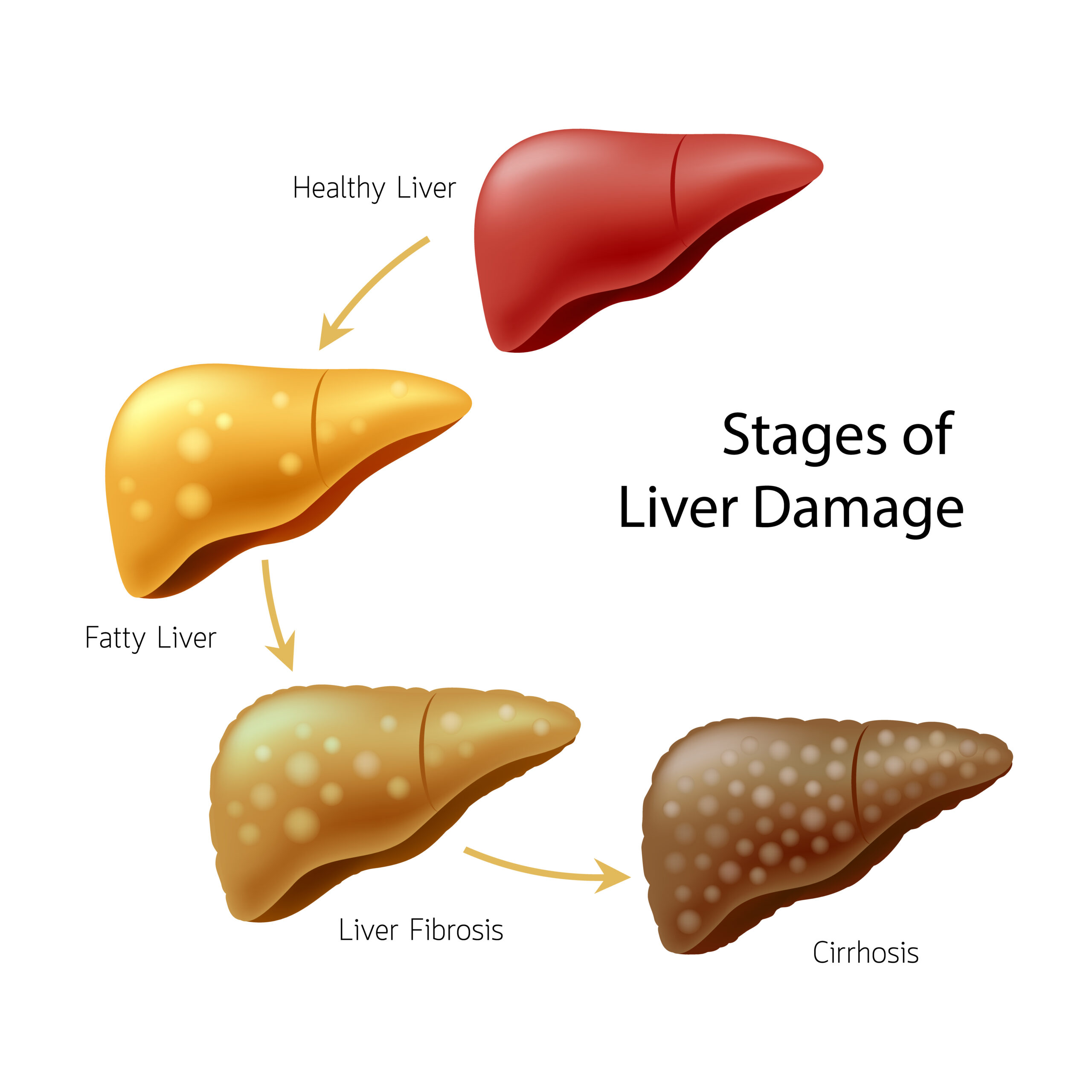
In U.S. alone, 4.5 million![]() adults have cirrhosis. Liver cirrhosis is the 11th most common
adults have cirrhosis. Liver cirrhosis is the 11th most common![]() cause of death in the world. Incidence varies geographically, depending on the amount of alcohol consumed and the presence of hepatitis viruses.
cause of death in the world. Incidence varies geographically, depending on the amount of alcohol consumed and the presence of hepatitis viruses.
The progression from long-term liver disease to cirrhosis symptoms appearance can take many years. In about 30% of patients, cirrhosis is wholly asymptomatic and is detected during examination for another reason.
The disease follows a progression with two distinct phases: the compensated phase, where the condition stays stable, and the decompensation phase, which is characterized by the sudden onset of severe symptoms and a rapid decline in health.
Because the liver has multiple functions, the symptoms of cirrhosis![]() are broad and involve many organs.
are broad and involve many organs.
Cirrhosis can happen for multiple reasons. The most common of these are alcoholism![]() and hepatitis viruses.
and hepatitis viruses.

Less common causes include:
Doctors begin to suspect liver cirrhosis based on the presented symptoms. The additional tests are then ordered. Tests that can be performed include:
Due to the complex functions of the liver, various blood tests![]() may be ordered when cirrhosis is suspected. To assess the functioning of the liver, doctors typically perform a range of tests. These may involve checking liver enzyme activity, protein levels, blood clotting parameters, bilirubin levels, and various other parameters.
may be ordered when cirrhosis is suspected. To assess the functioning of the liver, doctors typically perform a range of tests. These may involve checking liver enzyme activity, protein levels, blood clotting parameters, bilirubin levels, and various other parameters.
Scans that the doctors could order during the cirrhosis diagnostic process include various types of ultrasound![]() , CT, and MRI.
, CT, and MRI.
Abnormalities found in an ultrasound examination include an enlarged spleen, the liver has an irregular appearance, it may be enlarged or, on the contrary, too small, shrunken.
In addition to routine ultrasound, the doctors usually order a color Doppler ultrasound that can show characteristic disturbances in blood flow to and from the liver.
Another type of ultrasound is liver elastography![]() which can be used not only in making a diagnosis but also in assessing the prognosis of the disease.
which can be used not only in making a diagnosis but also in assessing the prognosis of the disease.
Gastroscopy examines the upper gastrointestinal tract (esophagus and stomach). In cirrhosis, it is performed to assess the presence of typical complications: varicose veins of the esophagus, which are dilated, winding veins, and portal gastropathy, which is damage to the stomach mucosa caused by blood stagnation associated with cirrhosis.
In a liver biopsy doctor collects a small part of the liver by inserting a thin needle through the skin. Next, the sample is examined under a microscope. This test is performed if the doctor has doubts about the diagnosis.
Liver damage in cirrhosis is irreversible. That's why there is no known cure for cirrhosis. However, treatment of the cause and prevention of the effects of the disease are implemented.
The basis of treatment is the elimination of the factor damaging the liver. The most common one is alcohol. Absolute abstinence can delay the appearance of severe complications by many months or even years.
In the case of hepatitis-induced cirrhosis, antiviral treatment is used. However, it must be remembered that this is to stop the disease's progression, not cure cirrhosis.
Experts also recommend not smoking and a proper, balanced diet![]() . In most people with chronic liver diseases, dietary restrictions, e.g., limiting coffee, do not apply. The exception is people suffering from Wilson's disease, for whom a diet low in copper is necessary for treatment, i.e., limiting products such as chocolate, nuts, seafood, and mushrooms.
. In most people with chronic liver diseases, dietary restrictions, e.g., limiting coffee, do not apply. The exception is people suffering from Wilson's disease, for whom a diet low in copper is necessary for treatment, i.e., limiting products such as chocolate, nuts, seafood, and mushrooms.
Doctors may use several medications to prevent or treat complications and relieve symptoms of cirrhosis:
If cirrhosis enters the phase of irreversible decompensation, the doctor may decide to do a liver transplant![]() If the organ is destroyed, it is the only chance of getting better. For this step, however, the patient must meet many requirements, including a psychological assessment of alcohol abuse.
If the organ is destroyed, it is the only chance of getting better. For this step, however, the patient must meet many requirements, including a psychological assessment of alcohol abuse.
Ascites![]() are an accumulation of fluid in the stomach. During cirrhosis, blood pressure in the abdomen's vessels is too high. This causes blood stagnation in the blood vessels and fluid leakage to the belly. Ascites are the most common and earliest-occurring complication of cirrhosis. If ascites appear, the prognosis of the disease worsens significantly.
are an accumulation of fluid in the stomach. During cirrhosis, blood pressure in the abdomen's vessels is too high. This causes blood stagnation in the blood vessels and fluid leakage to the belly. Ascites are the most common and earliest-occurring complication of cirrhosis. If ascites appear, the prognosis of the disease worsens significantly.
Depending on the amount of accumulated fluid, ascites is divided into:
Shortness of breath may occur with this complication. This means more than 15 liters of fluid have accumulated in the abdomen.
Doctors treat mild ascites with water pills (diuretics) and a low-sodium diet. In more severe cases, hospitalization and fluid drainage can be necessary.
Jaundice![]() happens when bilirubin accumulates in the body. Bilirubin is a product of red blood cell breakdown. Usually, it is removed from the body by the liver, but in cirrhosis, the liver doesn't remove it well enough. The excess of bilirubin deposits in the body cells creates the yellowish color of the skin and eye whites—bilirubin deposits in the skin cause persistent itching.
happens when bilirubin accumulates in the body. Bilirubin is a product of red blood cell breakdown. Usually, it is removed from the body by the liver, but in cirrhosis, the liver doesn't remove it well enough. The excess of bilirubin deposits in the body cells creates the yellowish color of the skin and eye whites—bilirubin deposits in the skin cause persistent itching.
Jaundice first appears in the whites, then the skin, and resolves reversely.
In cirrhosis, the pressure in the portal vein increases. This means that the blood can't flow in this vein efficiently and must find an alternative way of flow – it goes through the so-called collateral circulation, including the esophageal veins![]() . They are not adapted to transport such large amounts of it – they widen and stretch, creating varicose veins. Such veins become weak, brittle, and break easily. Ruptured esophageal varices may present as vomiting blood or loose black stools. It can be highly dangerous. Emergency medical attention is necessary.
. They are not adapted to transport such large amounts of it – they widen and stretch, creating varicose veins. Such veins become weak, brittle, and break easily. Ruptured esophageal varices may present as vomiting blood or loose black stools. It can be highly dangerous. Emergency medical attention is necessary.
Peritonitis![]() is the inflammation of the inner lining of your abdomen. Ascites, combined with fever and severe abdominal pain, persisting despite taking home painkillers, may indicate infection of the fluid accumulated in the stomach. Infected fluid, in turn, leads to peritonitis.
is the inflammation of the inner lining of your abdomen. Ascites, combined with fever and severe abdominal pain, persisting despite taking home painkillers, may indicate infection of the fluid accumulated in the stomach. Infected fluid, in turn, leads to peritonitis.
Hepatic encephalopathy is a set of psychiatric symptoms![]() . A damaged liver does not remove toxins such as ammonia, phenols, or fatty acids from the body. Toxins entering the brain cause symptoms of encephalopathy.
. A damaged liver does not remove toxins such as ammonia, phenols, or fatty acids from the body. Toxins entering the brain cause symptoms of encephalopathy.
Hepatic encephalopathy can manifest as:
People with cirrhosis have a higher chance of liver cancer![]() development. This applies mainly to the people with cirrhosis caused by the HCV infection.
development. This applies mainly to the people with cirrhosis caused by the HCV infection.

Liver cirrhosis prognosis differs depending on the severity of the disease. The severity is estimated with the Child-Pugh scale![]() . On this scale, factors such as the presence of encephalopathy, ascites, bilirubin level, protein levels, and blood clotting are assessed.
. On this scale, factors such as the presence of encephalopathy, ascites, bilirubin level, protein levels, and blood clotting are assessed.
Based on the severity of the abovementioned factors, you can obtain a score of 5 to 15 points. Based on that, three groups of cirrhosis severity with different 1-year survival rates are distinguished:
Some cirrhosis symptoms can be severe and require emergency medical help.
The symptoms that should alert you:
Other less sudden symptoms that should prompt you to see your GP include the following:
Some of the causes of cirrhosis are related to our lifestyle. You can reduce your chances of liver cirrhosis development by:
Table of Contents
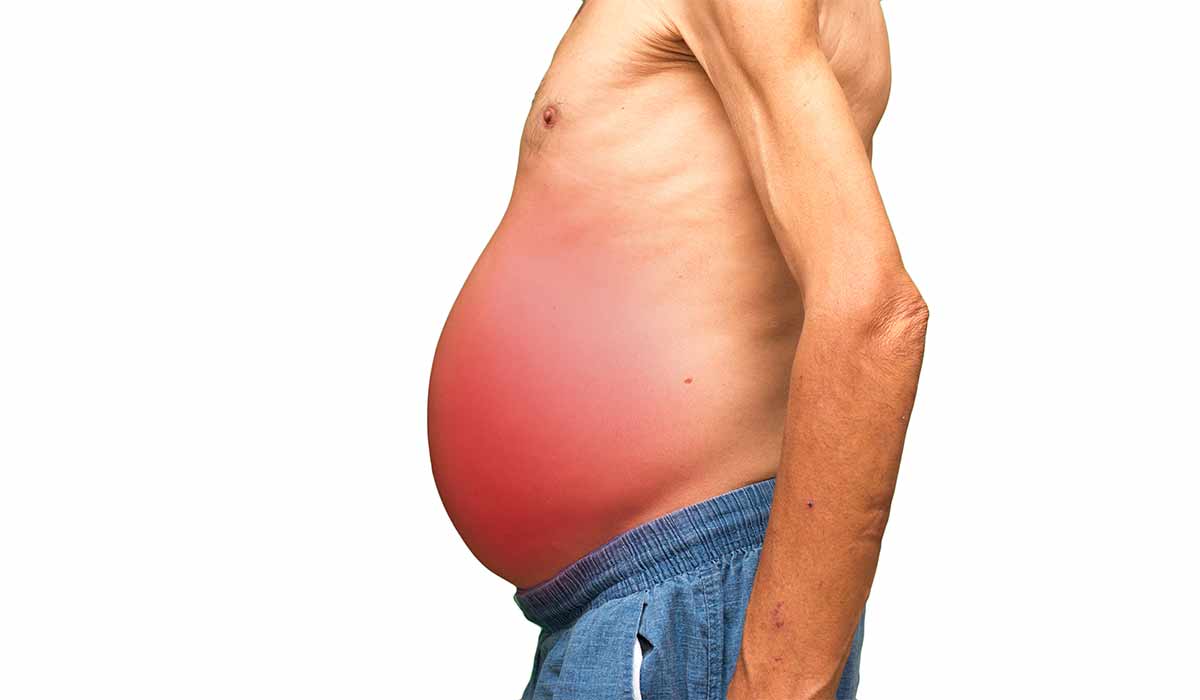
Ascites is a health condition that causes a pathological fluid build-up in the abdomen. It usually occurs when the liver… read more »
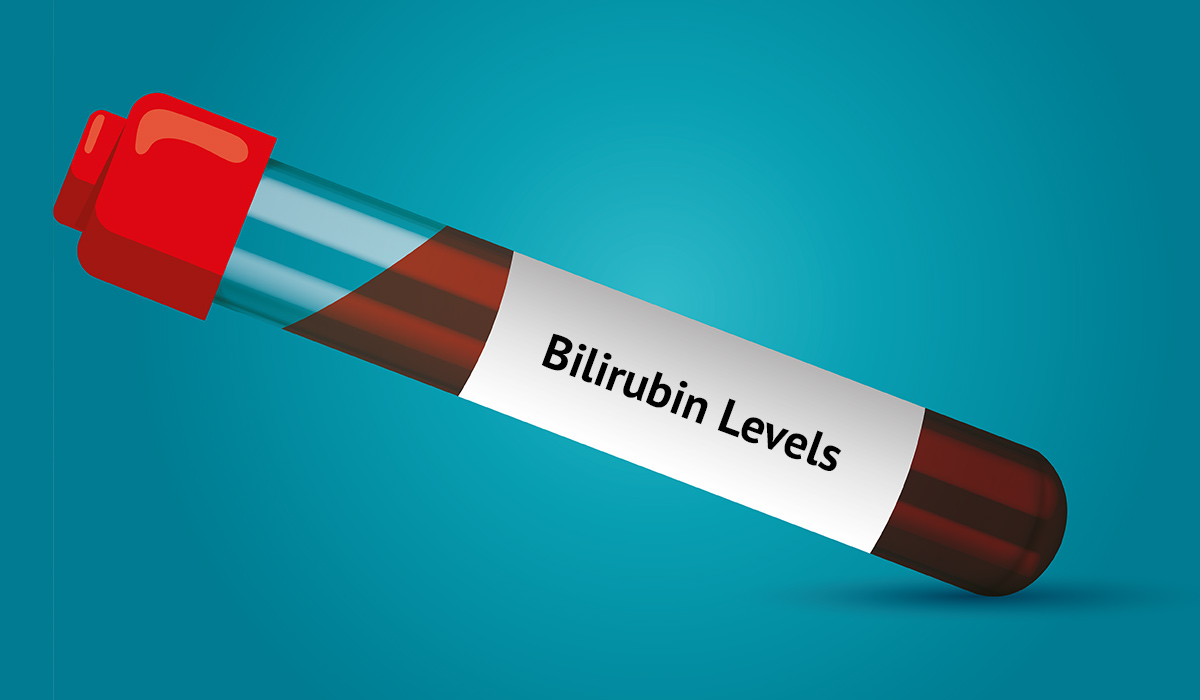
Do you know for what purpose bilirubin levels are tested? In our article you will find all the necessary information… read more »

Jaundice is a disease symptom that involves yellowing of the skin, mucous membranes and sclera. What are its causes? How… read more »
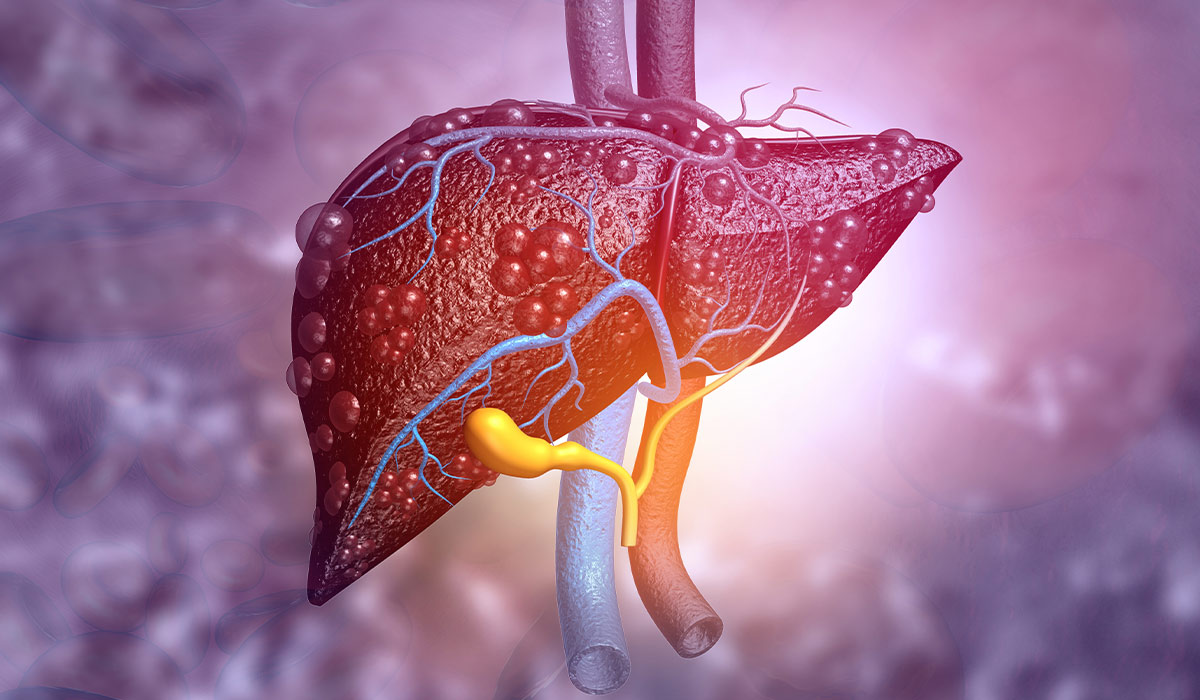
Fatty liver is a condition in which fat builds up inside the liver. It usually doesn't cause symptoms and is… read more »
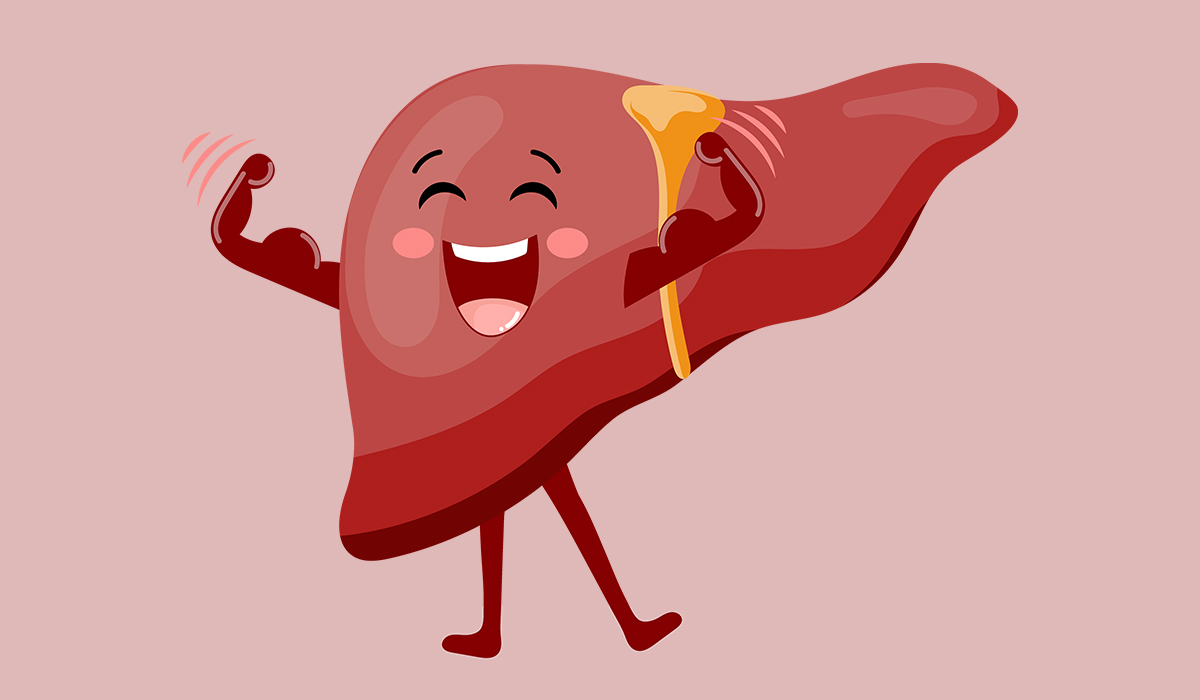
The liver is part of the digestive system. It performs over 500 functions in the body. It is impossible to… read more »
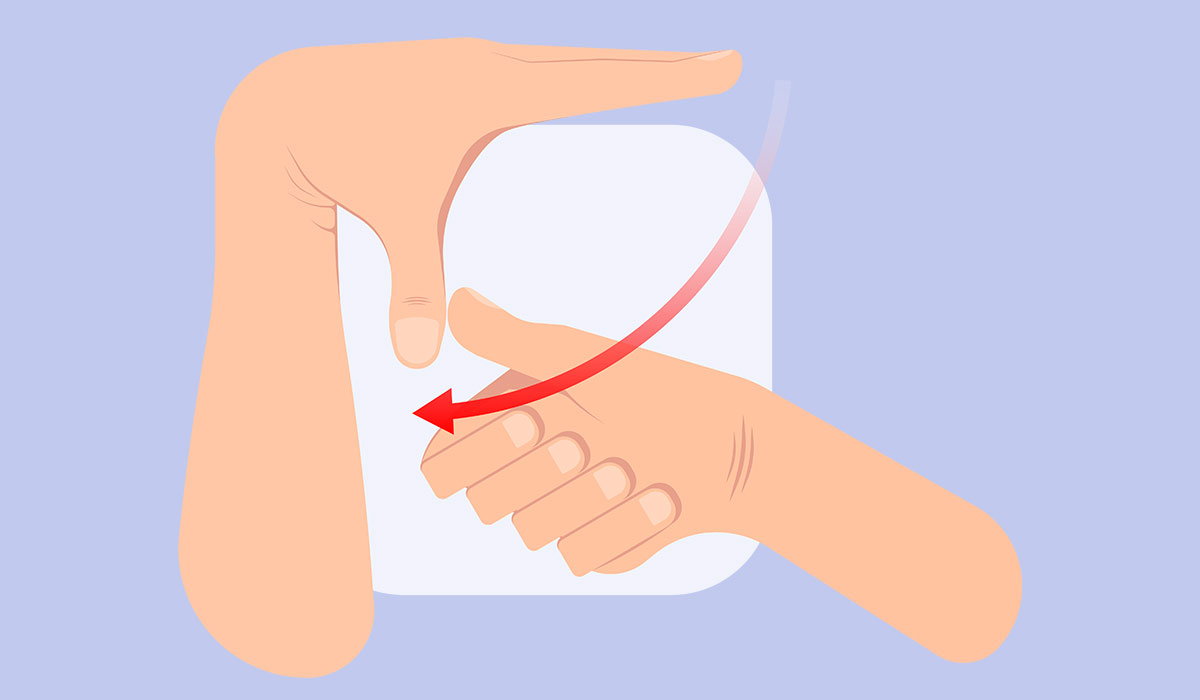
Ehlers-Danlos Syndrome is a group of diseases with a genetic basis. Learn all the symptoms associated with EDS. Find out… read more »
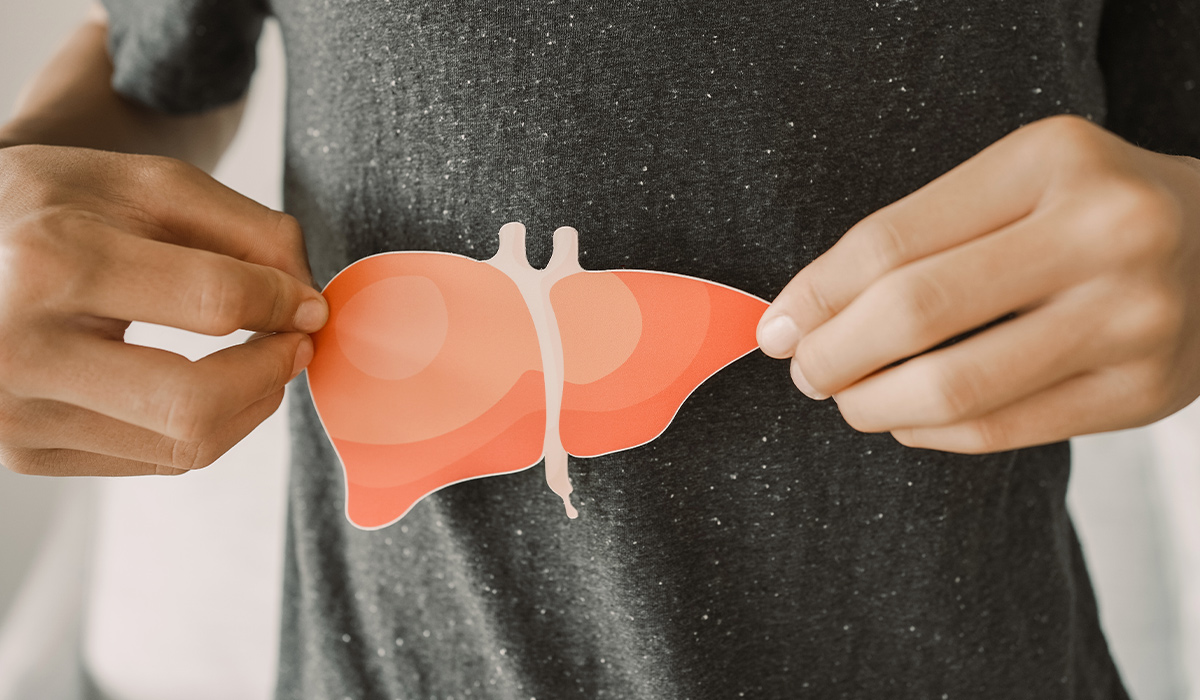
Hepatitis C is an infectious disease caused by the hepatitis C Virus. Left untreated, it can lead to severe consequences.… read more »
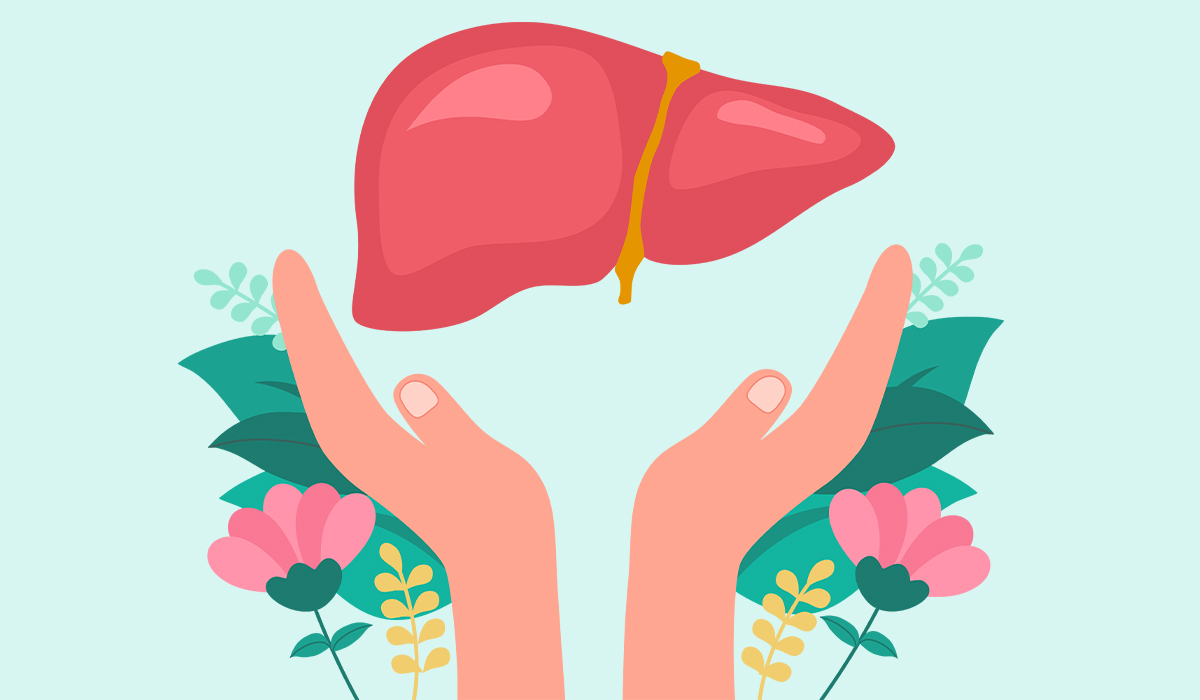
Liver cancer is a tumor that is found in the liver. The most common symptoms include jaundice, unexpected weight loss,… read more »
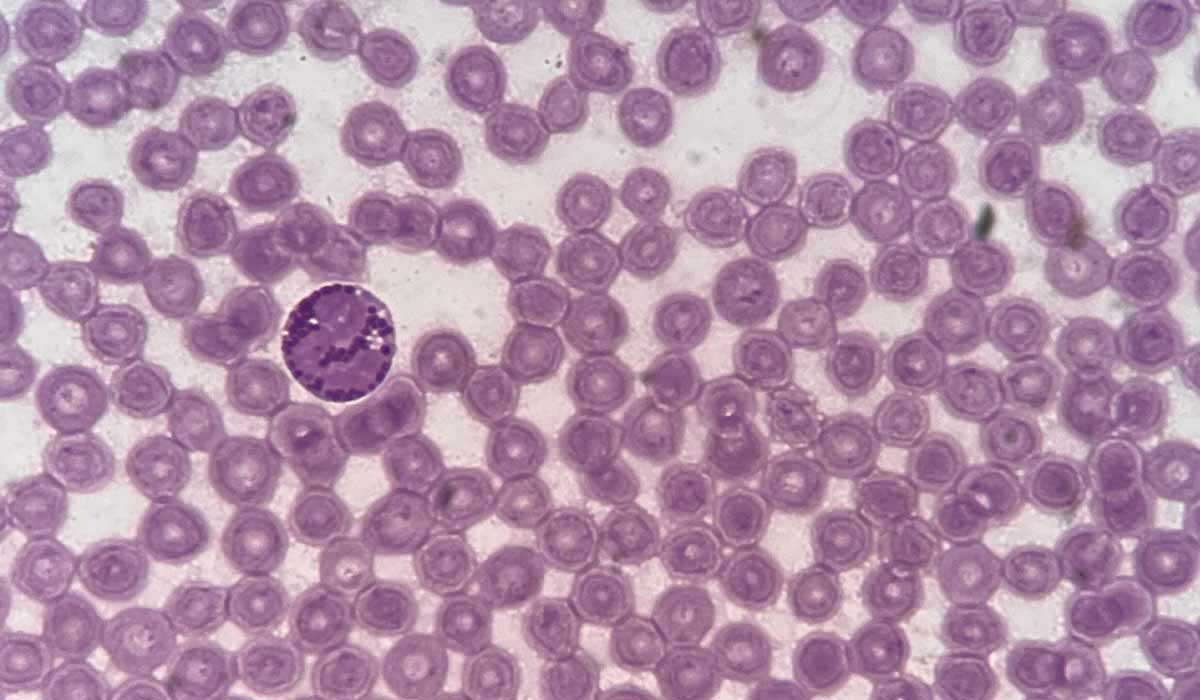
Anaplasmosis is a systemic infectious disease transmitted by ticks. It can be as dangerous as Lyme disease. Read the article… read more »